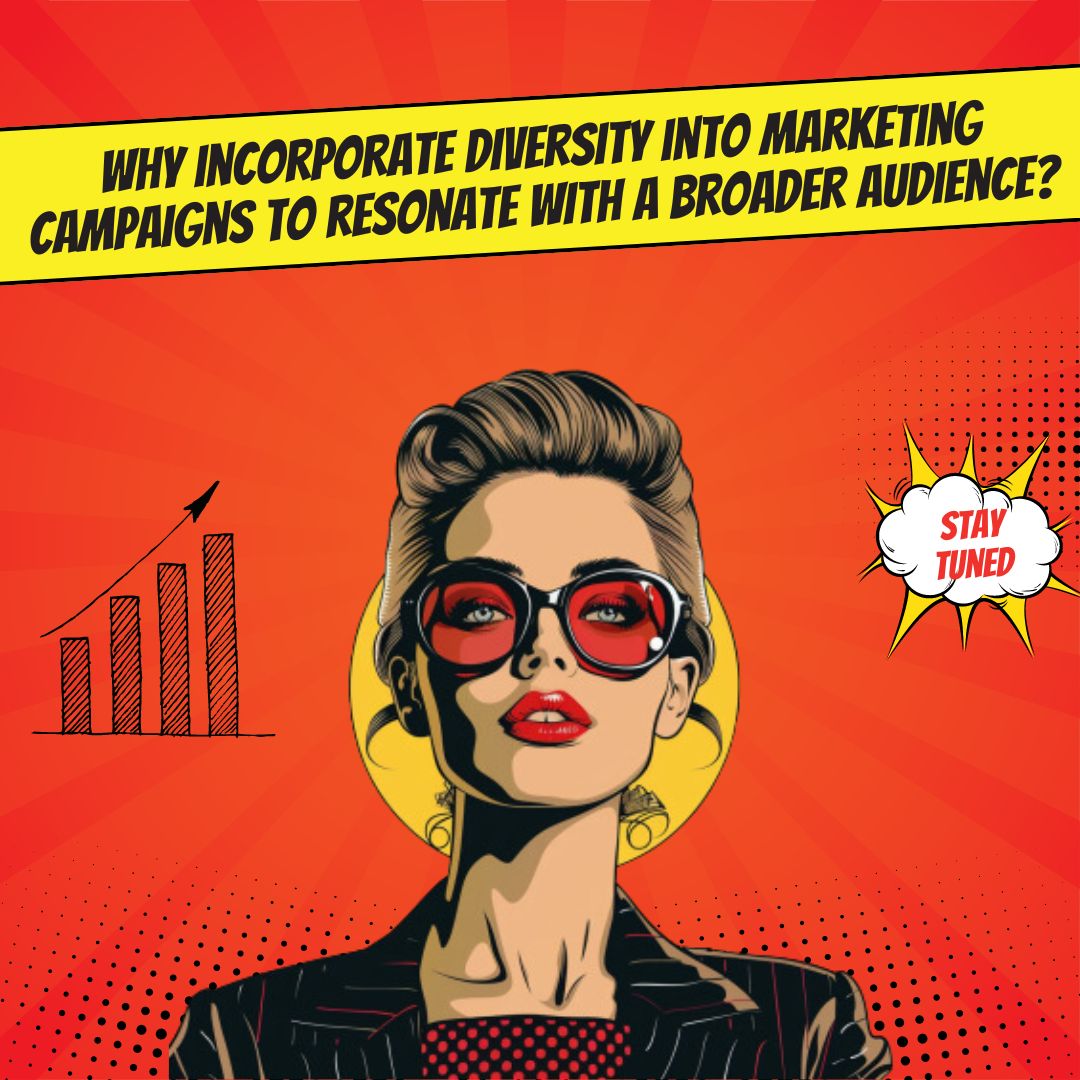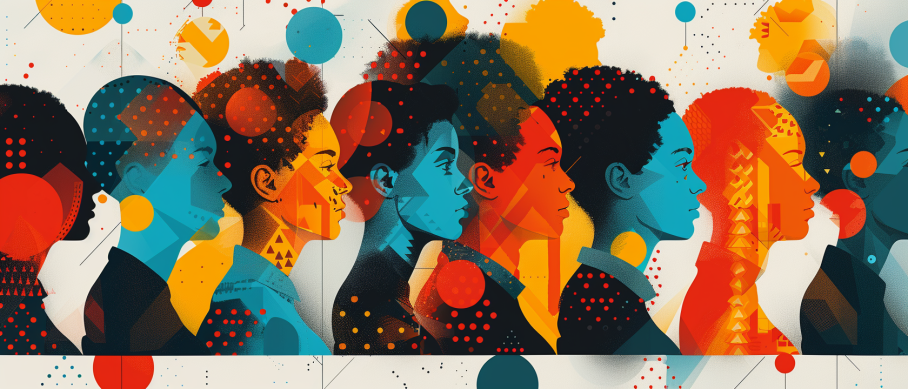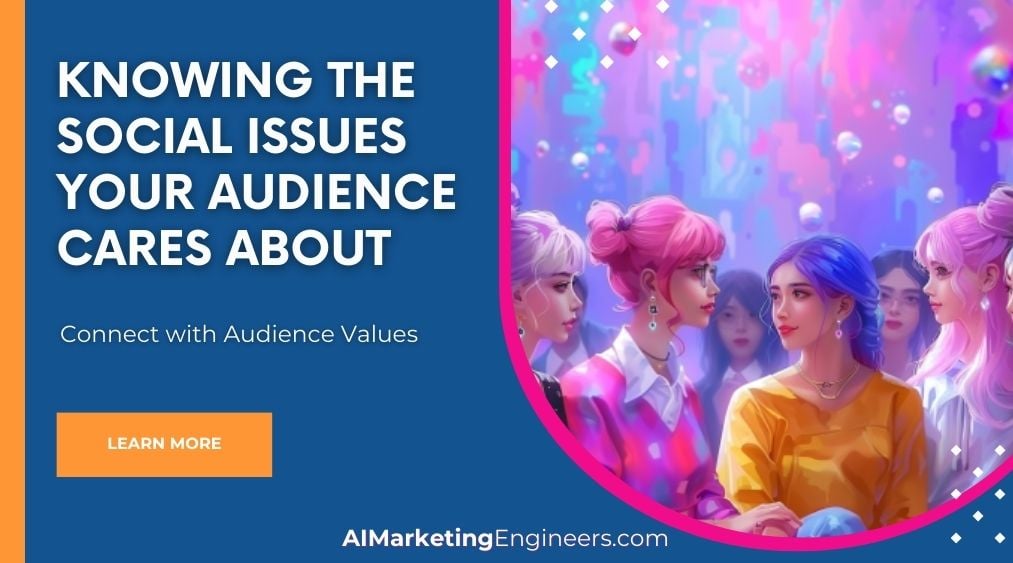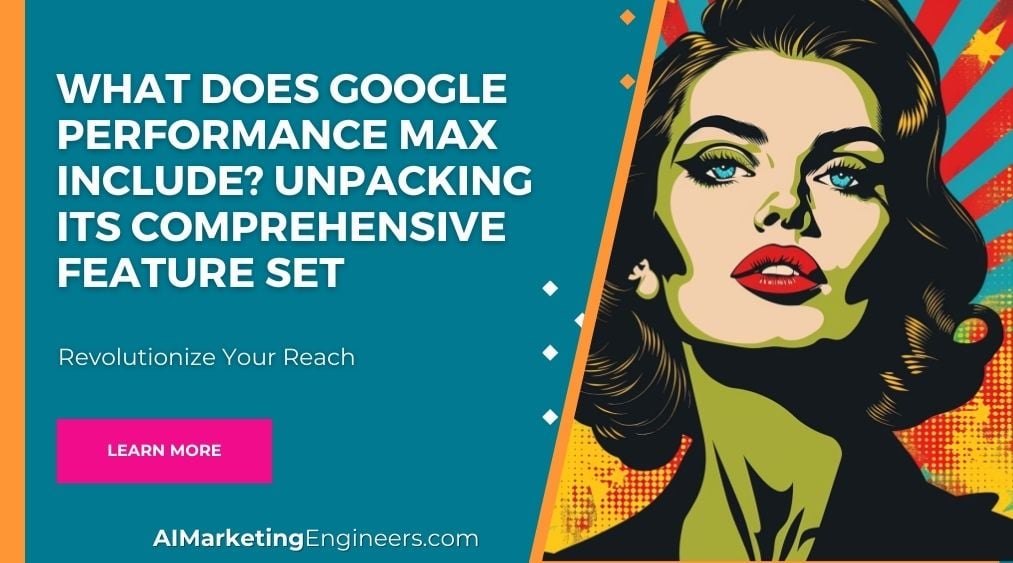Key Takeaways
✅ Diversify Your Team: Incorporating diverse experiences and perspectives into your marketing squad not just mirrors the real world but also enriches creativity. With 67% of job seekers considering diversity important, a mixed team can boost innovation and ensure messages resonate more genuinely. Assess your hiring practices to ensure they're inclusive.
✅ Use Inclusive Language and Images: A picture speaks a thousand words, and in marketing, every word counts too. About 70% of consumers feel more connected to brands with inclusive ads. Steering clear of stereotypes and opting for language and visuals that reflect the authentic diversity of societies can make your audience feel valued and understood.
✅ Listen to Customers and Avoid Stereotyping: Every customer's voice matters. Nearly 80% of consumers say they will engage with a brand if it shows inclusion and diversity in promotions. Active listening to your audience can guard against missteps in stereotyping, ensuring your campaigns strike the right chord every time. 
Introduction
Is your marketing strategy connecting with everyone it could? In the dynamic landscape of today’s businesses, Increasing Diversity in Marketing Campaigns isn’t just about fairness or ticking boxes—it's a powerful strategy to boost your brand's relevance, resonance, and returns. With a growing chorus for inclusivity ringing across industries, recognizing and valuing differences has become not just imperative but a beacon for growth and innovation. But how do businesses tackle this? What does it mean to genuinely incorporate diversity into your marketing strategy?
Dive into this read to unlock the secrets to effectively engaging diverse audiences, thereby enhancing your brand appeal and maximizing revenue. From understanding the richness of diversity to learning from past missteps by giants in the industry, this article lays down the blueprint for creating campaigns that everyone can see themselves in. Arm yourself with the knowledge of cutting-edge trends, the importance of authentic representation, and technological tools that can tailor your message to the world’s mosaic of consumers. Get ready to explore actionable insights and groundbreaking information that will elevate your marketing strategy from good to great, ensuring it's as diverse as the world we live in.
Top Statistics
| Statistic | Insight |
|---|---|
| 57% of consumers are more loyal to brands that commit to addressing social inequities | This demonstrates a clear shift towards consumer loyalty being tied to a brand's social values and actions beyond their products or services. |
| 70% of Gen Z consumers trust brands that represent diversity in ads | Gen Z's trust is paramount for brands aiming to build a future-proof consumer base. Representing diversity is not just good ethics; it's sound business strategy. |
| 64% of consumers will buy or boycott a brand based on its position on a social or political issue | This statistic underlines the importance of brand positioning on social issues and its potential markets effects, positively and negatively. |
| Multicultural consumers make up almost 40% of the U.S. population | Yet, the ad spending targeting them is strikingly low, indicating a large, untapped market potential for brands willing to diversify their marketing strategies. |
| 64% of consumers took action after seeing an ad they considered to be diverse or inclusive | Ads that embrace diversity aren't just seen; they move people to action, highlighting the tangible impact of inclusive marketing on consumer behavior. |
The Importance of Diversity in Marketing
Why is diversity so important in today's marketing world? Imagine entering a party where everyone looks the same, sounds the same, and shares the same interests. It wouldn't be very exciting, right? That's exactly how a lack of diversity in marketing feels to consumers. A diverse marketing campaign shows that brands understand and respect the unique experiences of their entire audience. Statistics reveal that 75% of consumers are more likely to purchase from a company that reflects diversity in their promotions. Companies like Nike and Coca-Cola have seen increases in customer trust and loyalty by celebrating diversity in their campaigns. These brands have not only captured attention but have also fostered a deeper connection with their audience.
Understanding the Different Aspects of Diversity
Diversity isn’t just about the color of someone's skin. It’s a rich tapestry that includes age, race, ethnicity, gender, sexual orientation, socioeconomic status, and disabilities. Each piece of this tapestry offers a unique perspective and set of experiences that can significantly influence consumer engagement and brand perception. For instance, a campaign that resonates with younger audiences might not hold the same appeal for older consumers. By understanding and embracing these differences, marketers can create more meaningful and effective strategies that speak directly to the diverse world we live in.
Challenges and Missteps in Diversity Marketing
Even with the best intentions, some brands miss the mark on diversity. Remember the backlash against Pepsi’s ad that seemed to trivialize protests and social movements? It serves as a stark reminder of the fine line between authentic engagement and perceived exploitation. Authenticity and avoiding tokenism are crucial in diversity marketing. Consumers are savvy; they can spot inauthenticity from a mile away, which can lead to distrust and disengagement. It's not just about featuring diverse faces in campaigns but understanding and respecting the stories behind them.
Strategies for Effective Diversity Marketing
So, how can brands create genuinely inclusive marketing campaigns? It starts with having a diverse team behind the scenes. Companies like Dove with its Real Beauty campaign achieved success by listening to and celebrating real stories from diverse groups of women. Furthermore, using diverse focus groups can provide insights that might be overlooked by a homogenous marketing team. The key is to strive for authenticity by ensuring that every campaign reflects the diverse voices and experiences of the audience it intends to reach.
The Role of Technology in Enhancing Diversity
Technology is a powerful tool in making marketing more inclusive. Advanced data analysis and targeted advertising allow brands to understand and connect with niche markets on a deeper level. Social media platforms offer an unparalleled opportunity to engage with diverse audiences directly, allowing for a more personalized marketing approach. Brands that have successfully utilized technology to enhance diversity in their marketing efforts understand that it's not just about the message but also about how and to whom the message is delivered.
As we look to the future, it's clear that diversity in marketing is not just a trend but a fundamental shift in how brands communicate with their audiences. The challenge for marketers is to continue finding innovative ways to genuinely connect with a global, diverse audience. Implementing the lessons learned from both successful and unsuccessful campaigns, understanding the different aspects of diversity, and leveraging technology will be key in crafting marketing strategies that not only capture attention but also foster inclusivity and respect.
AI Marketing Engineers Recommendation
Recommendation 1: Use Data to Understand Your Audience: Before you can effectively increase diversity in your marketing campaigns, it's crucial to know who your audience really is. Dive into the demographics of your current and potential customers using analytics tools and surveys. Gathering data on age, gender, location, income, and ethnicity will reveal who you're currently reaching and who you might be overlooking. This isn't just about ticking boxes; it’s about understanding the wide range of people who could connect with your brand. Studies show that brands which resonate personally with consumers see up to a 50% increase in brand loyalty. So, let’s put data to work and craft campaigns that truly speak to a broad audience.
Recommendation 2: Reflect Real World Diversity through Storytelling: In light of current trends, it's clear that storytelling is a powerful tool in marketing. But are the stories you're telling reflecting the rich diversity of the real world? Incorporate diverse characters and narratives into your marketing content that resonate with different segments of your audience. It's about more than just inclusion; it's about making every customer feel seen and understood. Recent surveys suggest that 70% of minority groups in the US feel underrepresented in marketing. By presenting diverse perspectives and experiences in your campaigns, you not only bridge that gap but also build stronger, more meaningful connections with your audience.
Recommendation 3: Leverage Social Media to Amplify Diverse Voices: Social media is a powerful platform for showcasing diversity and engaging directly with consumers. Use it to highlight diverse testimonials, collaborate with influencers from various backgrounds, or support social causes that align with your brand values. This approach not only diversifies your content but also builds trust and credibility with your audience. Research indicates that 63% of consumers are more likely to trust brands that show diversity in their advertising. Plus, social media's viral nature can significantly increase the reach of your diverse marketing messages, turning customers into advocates for your brand's commitment to diversity.
Conclusion
As we've journeyed through the landscape of increasing diversity in marketing campaigns, a few critical truths have emerged. First and foremost, diversity isn't just a box to tick or a trend to jump on—it's a deep-seated principle that reflects the multifaceted reality of our global audience. The benefits of weaving authentic diversity into the fabric of marketing are clear, ranging from heightened customer trust to lasting brand loyalty. Remember those statistics? They weren't just numbers; they were a testament to the power of inclusion.
It's also become apparent that diversity encompasses a broad spectrum, touching on aspects like race, gender, sexual orientation, and more. Each of these facets brings its own set of values and challenges to the marketing table, emphasizing the need for brands to approach diversity with sensitivity, understanding, and genuine intent. We've seen the pitfalls of getting it wrong—remember the backlash against Pepsi's ad? Yet, we've also celebrated the triumphs of campaigns like Dove's Real Beauty, showcasing the incredible potential when diversity is done right.
However, achieving meaningful diversity in marketing extends beyond just recognizing its different aspects. It requires a deliberate strategy that embeds diversity at the heart of brand identity. This involves using diverse focus groups, investing in technology that enables more inclusive targeting, and always striving for authenticity.
Looking ahead, the future of diversity in marketing holds endless possibilities. As technology continues to evolve, so too will the ways in which brands can engage with a broader, more diverse audience. But one thing is for certain: the journey toward diversity in marketing is not just a moral imperative—it's a business necessity. Brands that are quick to embrace this will not only contribute to a more inclusive society but will also see themselves flourish in a competitive marketplace.
So, as we reflect on the importance of increasing diversity in marketing, let's also look forward with optimism. The challenges are real, but so are the opportunities. It's up to us—marketers, brands, consumers—to drive this change. Will we step up and shape a future where every voice is heard, and every story is valued? The answer should not just be "yes," but "yes, and here’s how we’re doing it."
FAQs
Question 1: What is diversity marketing?
Answer: Diversity marketing is all about making sure everyone feels seen and heard. It's crafting strategies that speak directly to a wide range of folks – touching on different races, genders, abilities, you name it. It’s kind of like throwing a party and making sure there’s something for everyone.
Question 2: Why is diversity in marketing important?
Answer: It’s a big world out there, and embracing diversity means you’re inviting more people to the table. It's good for business, sure – it opens up new markets and opportunities. But more than that, it's about building trust and genuinely connecting with people from all walks of life.
Question 3: What are the key parameters of diversity marketing?
Answer: Think of it as covering all the bases – from making sure different cultures, ages, and genders feel included, to understanding and respecting everyone's unique perspectives and experiences. It's a mix of cultural, racial, ethnic, gender, sexual identity, generational, religious, and disability perspectives.
Question 4: How can I ensure authenticity in my diversity marketing campaigns?
Answer: Real talk? It’s all about keeping it 100% real. Skip the stereotypes and generalizations. Involve folks from diverse backgrounds in the planning and create messages that truly resonate. Authenticity is the secret sauce for connecting with people on a deeper level.
Question 5: What role does data play in diversity marketing?
Answer: Data’s like your roadmap. It helps you figure out who you’re reaching and how well your message is being received. Think of it as the compass guiding your efforts, making sure you’re on track and hitting the mark with your diverse audience.
Question 6: How can I measure the success of diversity marketing campaigns?
Answer: This one’s all about the evidence – are people engaging? Are they happy? Are your efforts turning into sales? Keep an eye on social media, listen to feedback from diverse groups, and watch those numbers. It’s like checking the pulse of your campaign.
Question 7: How can I start implementing diversity marketing on a limited budget?
Answer: You don’t need to break the bank to get started. Think about hiring diverse voices, tapping into inclusive stock photos, and making your website everyone-friendly. It’s about small steps that make a big impact.
Question 8: What are some effective diversity marketing strategies?
Answer: Build a brand that's welcoming to everyone. Think beyond the usual, maybe introduce mentorship programs, play with language variety, and really lean into the data to see what resonates with different groups. It’s about creating that sense of belonging.
Question 9: When should I consider hiring a diversity marketing consultant?
Answer: If you’re feeling stuck or need an expert eye to make sure your efforts are cohesive and hitting the right notes, bringing in a consultant can be a game-changer. They're like the coach guiding your team to the win.
Question 10: How can I avoid common mistakes in diversity marketing?
Answer: Stay genuine, steer clear of clichés, and always invite diverse viewpoints into the conversation. Mistakes happen – the key is to listen, apologize sincerely if you step wrong, and learn from it. It’s a journey, after all.
Academic References
- Diversity Representation in Advertising: A Systematic Literature Review. This comprehensive review delves into the impact of diverse representation in advertising. It emphasizes the significance of integrating insights from a vast array of articles to foster a deep understanding of diversity studies and their evolution in the field.
- Exploring Diversity and Inclusion in Advertising Research. This study highlights the urgent need for future research to broaden its scope to include more diverse attributes, delve into the complexities of multiple diversity attributes and intersectionality, and to incorporate an advertiser's perspective. This approach aims to shed light on the ongoing issues of lack of diversity and inclusion in advertising, paving the way for more representative and effective marketing practices.
- The Impact of Diversity in Advertisements on Brand Perception and Consumer Purchasing Habits. Uncovering the positive correlation between consumer purchasing behavior and the representation of racial diversity and diversity of body types in advertisements, this research underscores the negative impact of inappropriate or insensitive advertisements on consumer decisions and overall brand perception. This work serves as a critical reminder of the importance of fostering diversity and sensitivity in marketing campaigns for the benefit of both consumers and brands.












